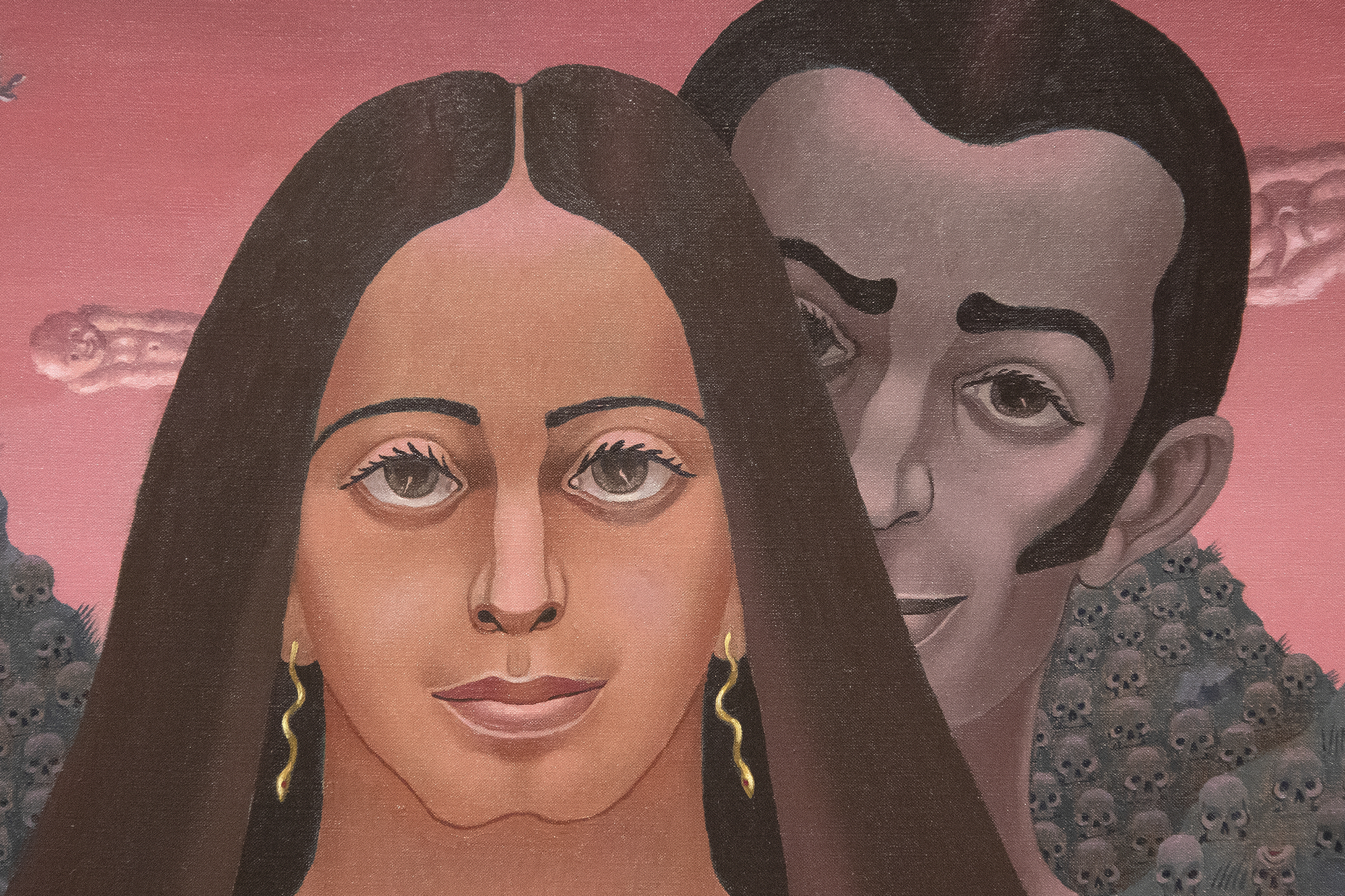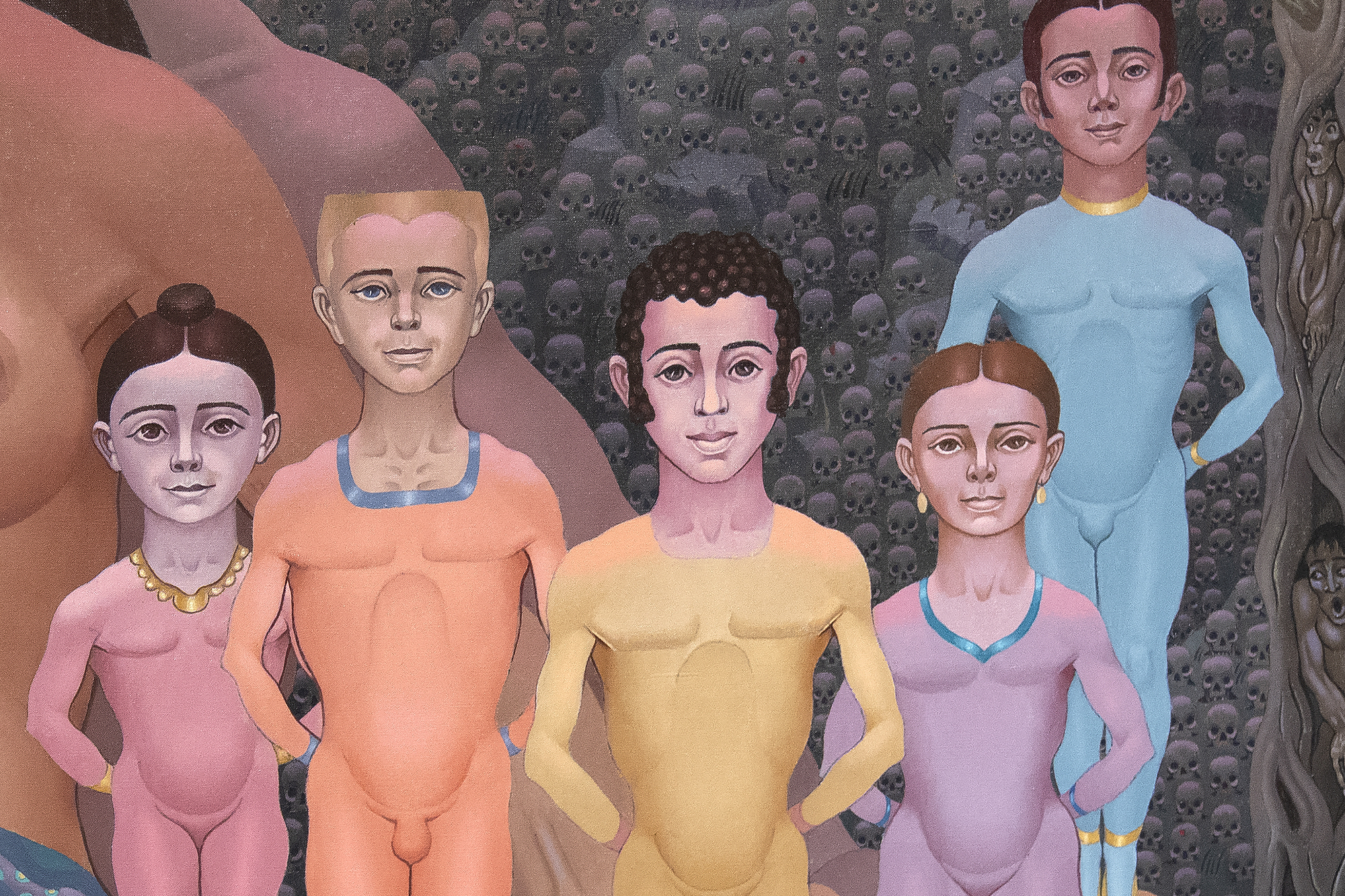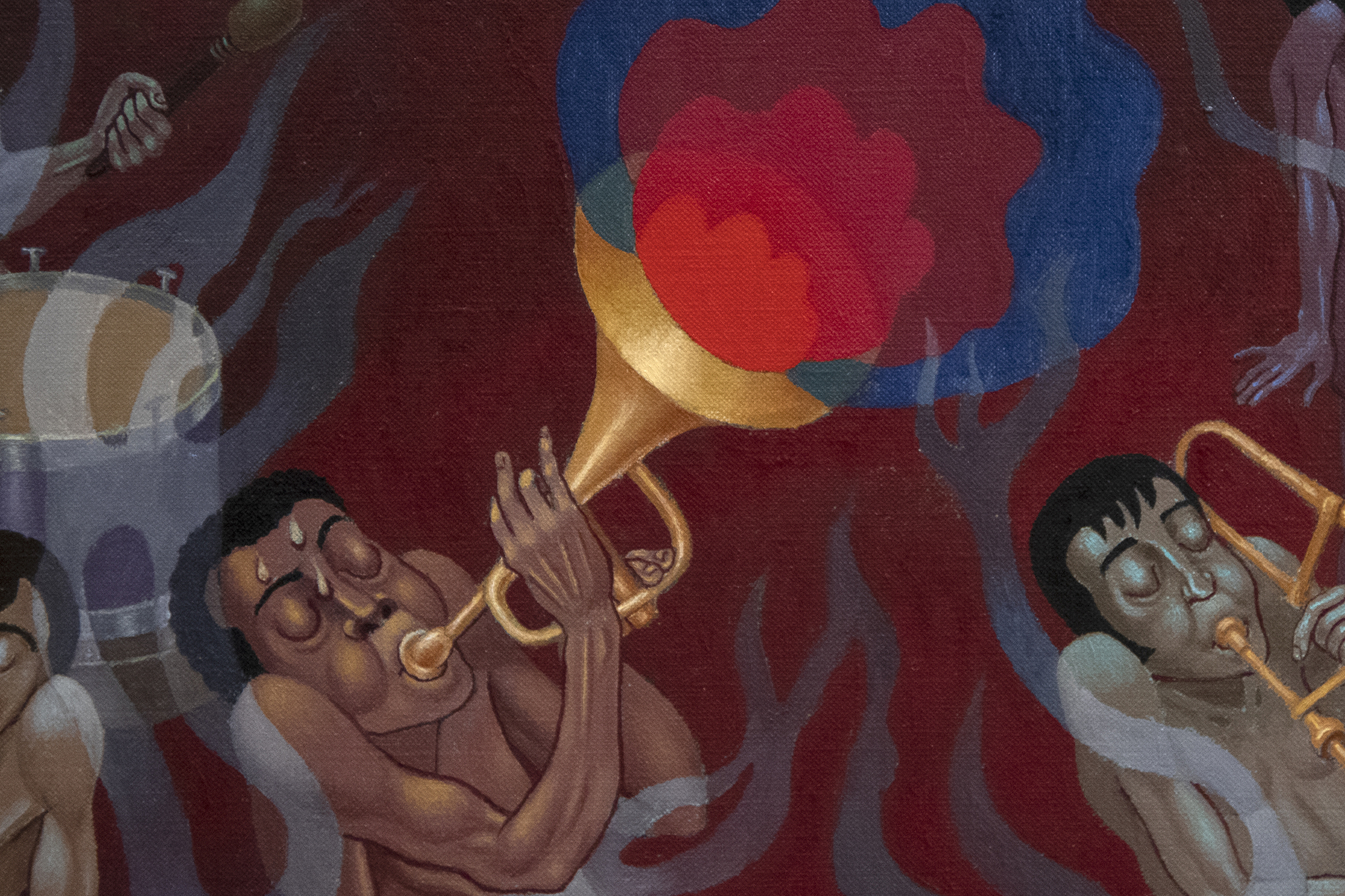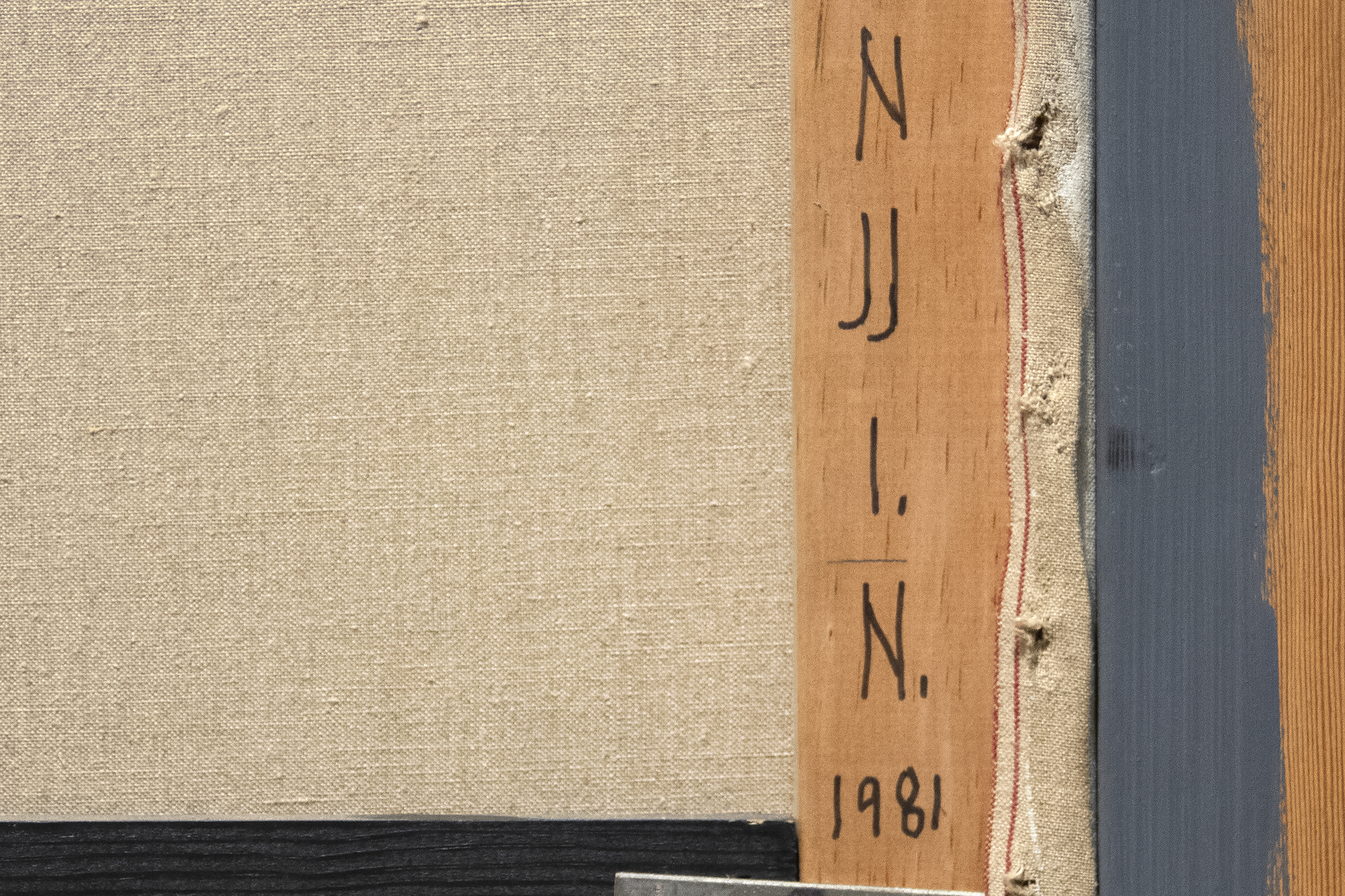アーヴィング・ノーマン (1906-1989)










出所
クロッカー美術館(サクラメント個人コレクション
展示会
1986年 オルタナティブ・ミュージアム(ニューヨーク2002年 サンタモニカカレッジ
2006 クロッカー美術館(サクラメント
2007年 パサデナカリフォルニア美術館
2007年 ユタ州立大学ノラ・エクレス・ハリソン美術館
2007年 アメリカン大学カッツェン美術館(ワシントンD.C.
文学
ダーク・メトロポリス:アーヴィング・ノーマンの社会的シュルレアリスム、スコット・A・シールズとレイ・デイ(サクラメントとバークレー:クロッカー美術館と全日記、2006年)、pg. 199アーヴィング・ノーマンの人物は、環境と物理的な空間によって操作され、その脆弱性と隷属性を強調するために、人間の形の可鍛性を誇張するスタイルである。この文字通りの、そして象徴的な伸縮性は、これらの人物が環境の力によって引き伸ばされたり、圧縮されたり、ねじれたりしていることを示唆しており、彼らの自律性の欠如と、彼らの存在を支配する抑圧的なシステムを強調している。これらの人物は脆弱性を反映しているが、『人間の条件』におけるノーマンの構造的な選択は、中央のタブローに注意を移すような厳しい並置を生み出している。過去の災難に満ちた失敗や残虐行為から立ち上がる威厳ある女性の姿に、男性が加わり、象徴的な "カップル "を形成する。拡大され、上を向いた両手は、未来への希望と再生をもたらすビジョンとして、この子供たちを提示している。このジェスチャーは、小柄な人物の未来的な服装と相まって、代替的な道、つまり明るく前向きな人間性という考えを強めている。
ここでノーマンは、楽観的ではないにせよ、希望に満ちた未来への展望を強調している。両脇に追いやられた暗いシーンは、過去と現在の重荷を表している。同時に、中央の人物は、回復力と再生によって形作られる未来の可能性を体現している。この並置は、『人間の条件』がノーマンの晩年を反映した作品であることを際立たせている。そこでは、戦争煽動、忌まわしい腐敗、狂乱的な快楽追求、現代社会の非人間的な影響に対して、温和な希望が高みに立つことを主張している。
ノーマンはその長いキャリアを通じて、自分の信念を貫き、背筋を伸ばし、何もない大きなキャンバスに向き合い、複雑で人口密度の高いシーンをデザインし、描いた。知名度に関しては、彼は状況を合理化した。名声や幸運は、芸術家の探求の汚れのない本質を危険にさらすからだ。結局のところ、『人間の条件』はノーマンの人生と作品の総括であり、彼が鮮やかに描き出したシステムに私たちが加担していることを検証するよう促す、行動への呼びかけでもある。綿密な職人技と寓意的な強さによって、ノーマンが丹念に構想を具現化した当時と同様に、そのテーマは今日でも適切であり、共鳴し続ける美術館にふさわしい傑作である。


